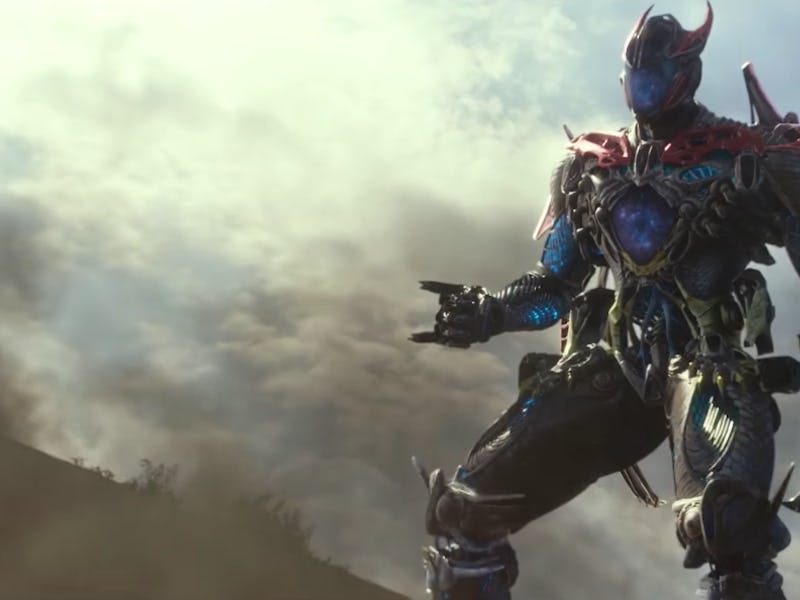The Power Rangers' Megazord is a Giant Metallic Superorganism
Sometimes, many equals one.

For many kids growing up in the ‘90s, the original Power Rangers franchise was a crash course introduction into the nerdier aspects of innovation: the physics-defying moves of martial arts, giant mechanical robots, extinct animals, and genetic mutation. But the show also inadvertently exposed kids to the niche science of superorganisms, thanks to Zords and Megazords.
Here’s how that works: Each Ranger commands their own gigantic mechanical robot that can provide some much-needed extra support when battles with enemies start escalating into dire situation territory. Every battle almost always involves the villain blowing up to a gargantuan size, which leads to the Rangers calling in their line of defense, the equally gargantuan Zords — big-ass mechanical battle robots who take on the shape and movement of extinct animals, like dinosaurs, sabertooth tigers, mastodons, etc. Those Zords, in turn, can link up to form a more humanoid shape called the Megazord, which ostensibly operates like a single gigantic battle bot.
Megazords, in other words, are superorganisms — “like an organism comprised of organisms that share a singular set of goals,” Jamie Gillooly, a scientist at the University of Florida who has previously researched superorganism behavior in insect populations, tells Inverse. “It has really often been used as metaphor, for organisms [of a single species] that operate so intensely that they essentially function as a singular organism.”
This is distinct from a population of individuals within the same species forming a community or tribe or pact. The individuals in a superorganism, Gillooly says, “won’t operate necessarily in their best evolutionary interest. They operate in the best interest of the colony.” For example, in ants the males may elect to forego attempts to reproduce, instead relegating themselves to something akin to worker status. The intrinsic desire for to copulate and pass on one’s genes to progeny is entirely ditched to better serve the colony.
For that reason, superorganisms are primarily observed in insect populations. The hive colony operates in most ways as a single unit, with each individual acting more like an appendage of a larger body rather than independently.
It’s a fascinating phenomenon by itself, but it’s more interesting to understand how the superorganism concept might apply elsewhere. “One of the reasons they’ve been studied a lot is because there are some parallels with other species, including human societies,” says Gillooly. “Maybe human society is acting as a superorganism in certain respects.” He cites urban centers as one such example, in which large populations occupying a dense space tend to behave in ways that show a type of automatic cooperative thinking. Think about the way commuting crowds on the sidewalk will move, and knowing transform in a way that flows relatively quickly.
A superorganism is, to some extent, a counterintuitive notion to the classical notion of how a biological species adapts and evolves. “It doesn’t jibe well with Darwin’s theory of natural selection,” says Gillooly. Natural selection posits that the strongest individuals of a species are in the best position to survive and reproduce. Individuals are competing against one-another, even if they are part of the same family unit, so to speak.
A superorganism, in other words, is illustrative of a situation where an individual forgoes its own interests in favor of what we might call “group selection.” Exactly how advantageous that is is debatable, but when it comes to the insect kingdom, there’s no doubt this is a solid strategy. You only have to have a cursory knowledge of how many different insect species populate the world to see that it works.
Nevertheless, “when organisms are grouped together, they can potentially be more vulnerable to predators,” Gillooly says.
Which is all to say that the Power Rangers’ Megazord acts like a superorganism. The individual zords can operate on their own volition, but — at least when they join forces as a gigantic super robot — they are literally parts of the same, singular body. The Megazord succeeds or fails, lives or dies, as one. Each Zord gives up its independence — and by consequence, an ability to protect itself and safeguard its own interests and advantages — for the sake of the group.
It’s worth noting a superorganism is also distinct from what we might think of as a symbiotic relationship between multiple organisms. Symbiosis requires individuals from two or more different species; a superorganism, on the other hand, is comprised of all the same species.
Even if we let this one science loophole go, the Megazord-as-superorganism connection still holds up well, particularly in the context of future technology. There’s a lot of speculation that as we develop more and more ways for people to interface directly with digital networks, we’ll reach a point where individuals can more effortlessly act in seamless concert with one another. It’s a bit strong to say humans might one day be able to access something of a hive mind, but hey, the internet was a weird thing to consider at first, too.